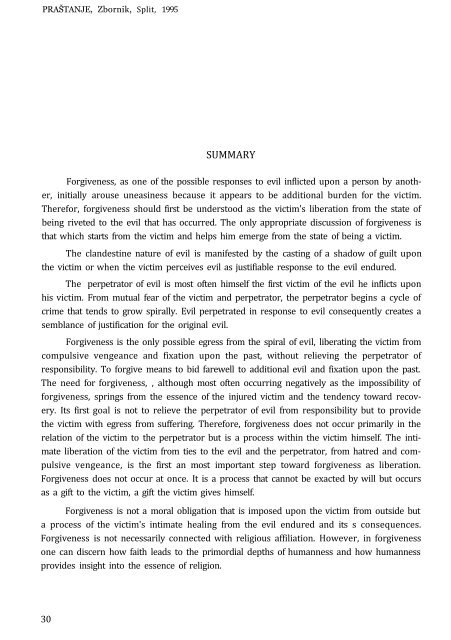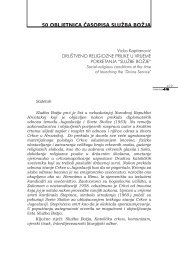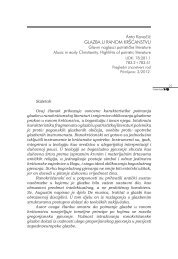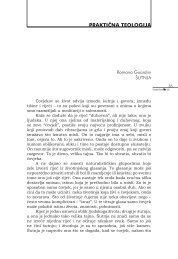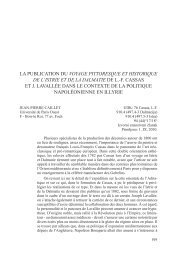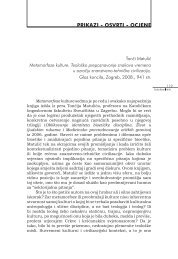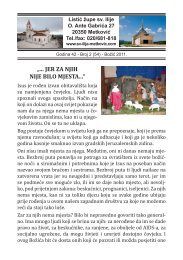Create successful ePaper yourself
Turn your PDF publications into a flip-book with our unique Google optimized e-Paper software.
PRAŠTANJE, Zbornik, Split, 1995<br />
SUMMARY<br />
Forgiveness, as one of the possible responses to evil inflicted upon a person by another,<br />
initially arouse uneasiness because it appears to be additional burden for the victim.<br />
Therefor, forgiveness should first be understood as the victim's liberation from the state of<br />
being riveted to the evil that has occurred. The only appropriate discussion of forgiveness is<br />
that which starts from the victim and helps him emerge from the state of being a victim.<br />
The clandestine nature of evil is manifested by the casting of a shadow of guilt upon<br />
the victim or when the victim perceives evil as justifiable response to the evil endured.<br />
The perpetrator of evil is most often himself the first victim of the evil he inflicts upon<br />
his victim. From mutual fear of the victim and perpetrator, the perpetrator begins a cycle of<br />
crime that tends to grow spirally. Evil perpetrated in response to evil consequently creates a<br />
semblance of justification for the original evil.<br />
Forgiveness is the only possible egress from the spiral of evil, liberating the victim from<br />
compulsive vengeance and fixation upon the past, without relieving the perpetrator of<br />
responsibility. To forgive means to bid farewell to additional evil and fixation upon the past.<br />
The need for forgiveness, , although most often occurring negatively as the impossibility of<br />
forgiveness, springs from the essence of the injured victim and the tendency toward recovery.<br />
Its first goal is not to relieve the perpetrator of evil from responsibility but to provide<br />
the victim with egress from suffering. Therefore, forgiveness does not occur primarily in the<br />
relation of the victim to the perpetrator but is a process within the victim himself. The intimate<br />
liberation of the victim from ties to the evil and the perpetrator, from hatred and compulsive<br />
vengeance, is the first an most important step toward forgiveness as liberation.<br />
Forgiveness does not occur at once. It is a process that cannot be exacted by will but occurs<br />
as a gift to the victim, a gift the victim gives himself.<br />
Forgiveness is not a moral obligation that is imposed upon the victim from outside but<br />
a process of the victim's intimate healing from the evil endured and its s consequences.<br />
Forgiveness is not necessarily connected with religious affiliation. However, in forgiveness<br />
one can discern how faith leads to the primordial depths of humanness and how humanness<br />
provides insight into the essence of religion.<br />
30


